Let’s talk a bit about the benefits and difficulties with annealing and discover if it’s as necessary as many proclaim. The process is metallurgical in nature. As any metal is heated to a certain point, it becomes soft. When allowing it to cool naturally, the metal will retain a softness and malleability that can be different from various other sections of the same piece. Unlike hardening, which is a rapid cooling and shrinking of the atomic bonds, also called covalent bonds, that hold the metal structure, annealing allows them to remain farther spread apart and allows more free movement of travel for the atoms contained inside.
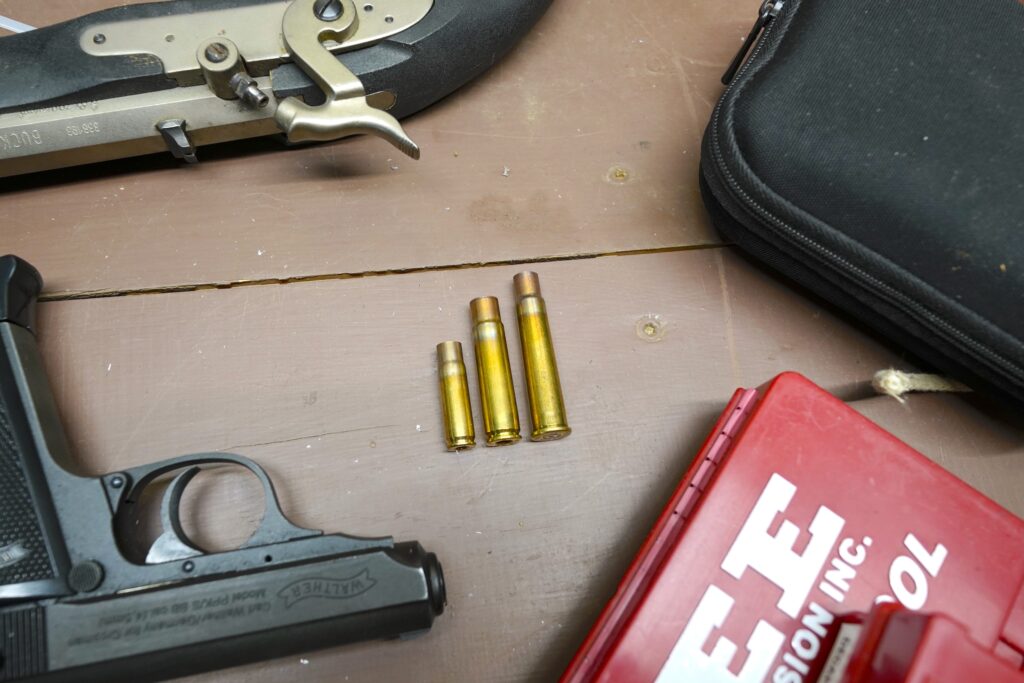
Annealing can be done on a wide range of brass. Necked cartridges require annealing.
So, what does that all mean? Well, in simplest terms, the material will become much softer compared to its heat-treated counterpart. It also means it has the ability to expand a bit more or ‘swell’ as the atomic bonds loosen. This is why heating a stuck bolt will assist in removal when stuck. Hotter metals are generally softer metals.
What Happens to Cases Over Time?
There are conflicting statements across many publications that brass will harden over time naturally. Since brass carried a high copper content, which is known to harden naturally over time, it’s safe to assume that brass will harden as well. Assumptions can be wrong and I’m not a metallurgist, but logically any alloy containing copper will begin to gain strength over time. As any metal hardens, it also becomes brittle. This can lead to damage to a case, especially in thinner sections.
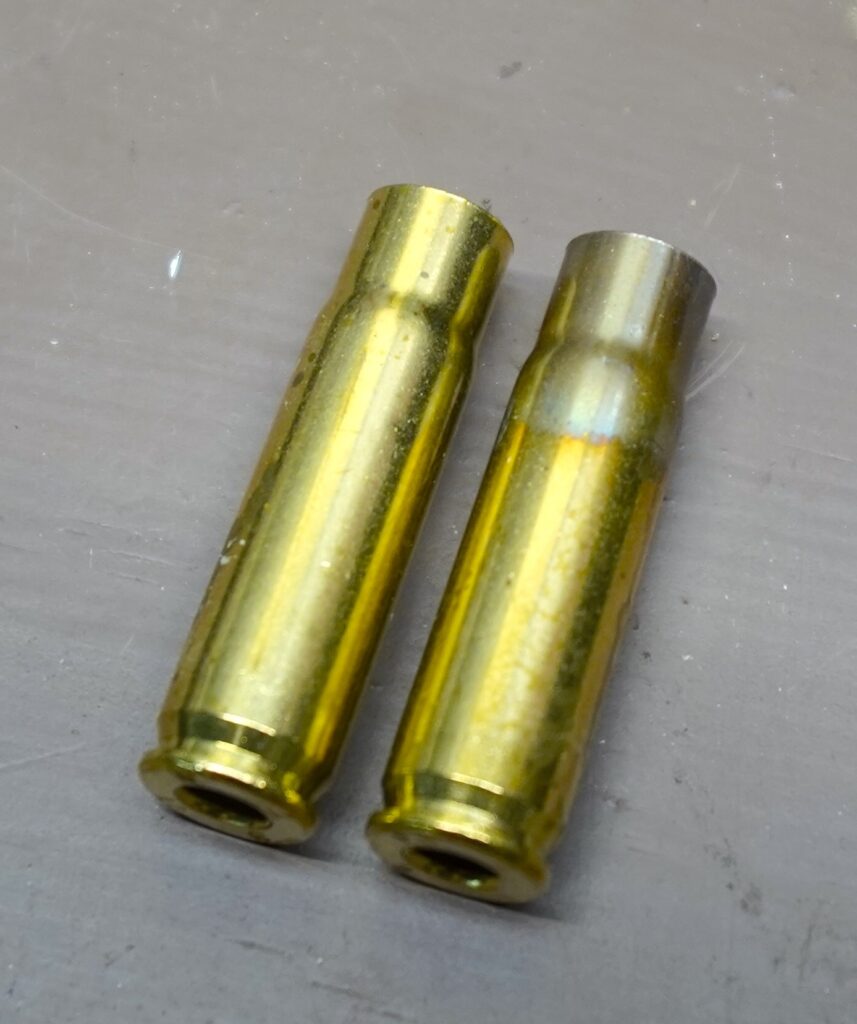
Once brass has been treated with heat, the color will change as oxidation happens.
Now, harness doesn’t just continue. There’s a reason brass is nowhere near as hard as steel; It has limitations. Brass can also be hardened by heating and rapid cooling. Overall, there is a swing that can range from 37 to 155 Brinell hardness. For comparison, mild steel has a Brinell hardness of 120 and tool steel up to a hardness of 900. So, in certain circumstances a hardened steel can be just as hard, or harder, than mild steel. I bet that cheap steel cased ammunition isn’t looking so bad now.
Do Cases Harden with Use and Other Hardening Processes?
Short answer, yes. Heat treatment can be a method of bringing the material to a critical point and rapidly cooling. Doing this allows a metal to tighten the atomic structures at a rapid pace, almost ‘freezing’ them in place and shrinking the bonds that hold these atoms together. When firing a gun, a rapid expansion and heating of gasses will heat certain parts of the case structure rapidly which will cool off fairly quickly in ambient temperatures. Repeated firings will continue to shrink those bonds over and over until the brass surface has reached a limited hardness point with use.
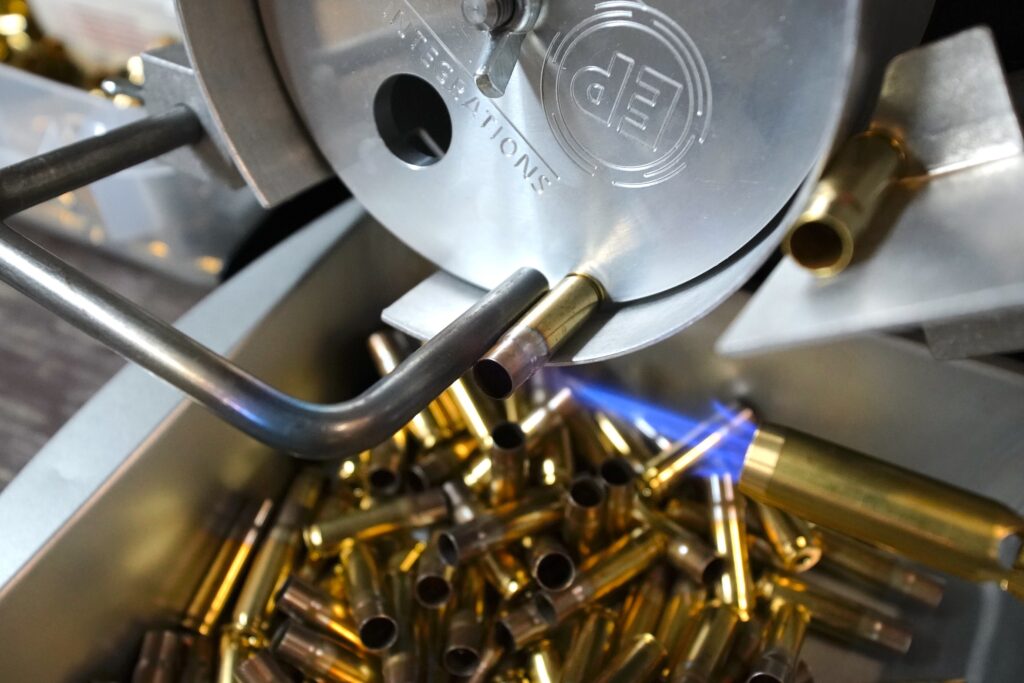
When some cases are cut down the neck is made from a harder brass than standard. 300 Blackout made from 223/556 brass is a common case to be made instead of purchased.
But what really impacts the strength is the working of a material. Mixing in a process of expanding, resizing, and crimping also ‘works’ the brass. Think of it like rolling up a sheet of paper. The more it compressed, stepped on, and pushed down the harder it becomes. Repeated reloading will constantly increase the Brinell strength through natural manipulation and compression.
Companies like Peterson Cartridges have done extensive testing and even found that ammonia-based cleaners accelerate the ‘natural’ hardening of the lattice structures in the covalent bonds of brass. Even a small misting of these products greatly increases the speed at which the structures of the metal will constrict and become brittle.
Is Hardened Brass Bad?
Mixing the natural aging hardness and the repeated firing we are left with a material that has hardened to a point of being brittle. For case heads, this isn’t a concern. We want hardness. For a case neck, this can be disastrous. Case necks that are brittle tend to lead to cracked case necks, case separation, issues reloading, and negatively impacted accuracy.

Having a machine that can easily change from a short to a longer caliber, like 303 British, allows for more versatility.
Generally, a case neck needs to have a Brinell number of 90-160 from the case mouth to after the shoulder. The body of a case should remain as hard as possible and preferably at 200. At these levels, the case body will form perfectly to a chamber and retain the shape while the neck will easily expand for a projectile to be fired and released without increasing chamber pressures past their acceptable limits.
What Methods are Best for Annealing?
Many various methods have been tested. As a rule of thumb, brass needs to reach 600-800 F in order to properly anneal. For a quick reference, without getting into thermodynamics, 1 btu is a measurement of how much energy – heat – it takes to increase the temperature of 1 lb of water by 1 degree F. Specific heat is a measurement of how many BTUs it takes to heat 1 lb of material 1 degree F. Air has a specific heat of .24 BTU but brass is 0.096. So, brass heats up incredibly fast and in these examples, water is an insulator protecting the case.
Water bath methods are incredibly common. Brass is submerged in a pan of water with the necks sticking out. The water quickly removed heat from the case body, but the neck can be heated and allowed to cool naturally. A torch is passed over the case necks and shoulders to heat the material adequately. Brass annealed with this method has a very uniform color. Perfectionists tend to love the method for the perfect lines it produces.
Induction heaters are a new method that uses a coil to generate an electromagnetic field to heat up a conductive material. Induction heaters are used in various industries including welding. Brass is set inside the coil and rapidly heats up. It is very safe compared to alternatives as there is no open flame.
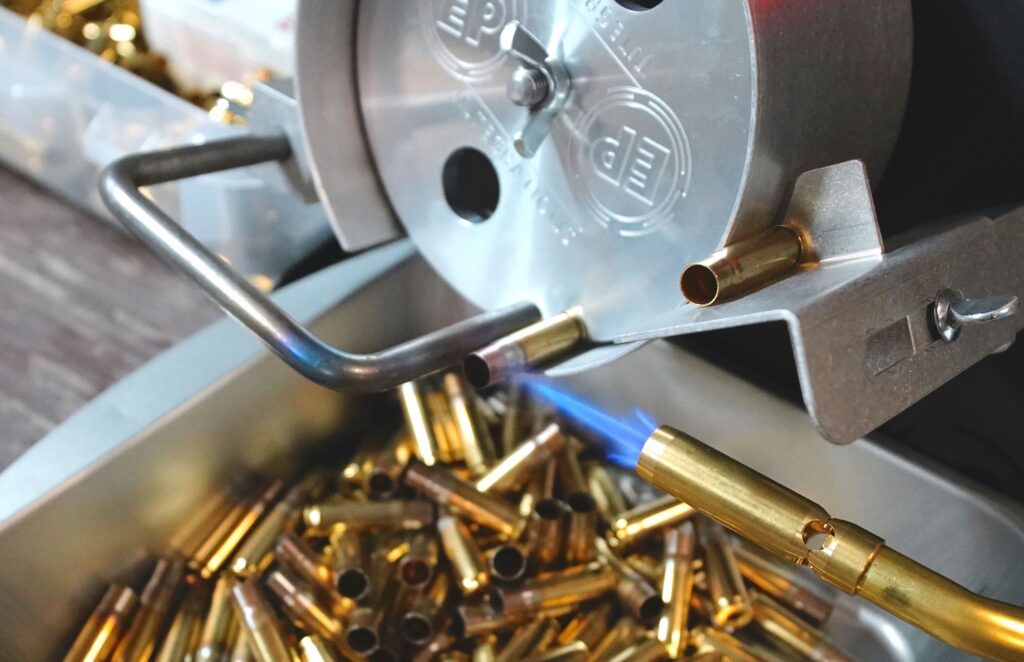
An open flame, like one from a propane torch, is one of the most reliable annealing tools an individual can have in their toolkit.
Molten salt bath annealers are relatively new and require some additional materials. A user needs a lead pot filled that can achieve required temperatures with a salt mixture. The cases necks are inserted into the salt mixture for a few seconds and removed. A change in color theoretically indicates an ‘annealed’ case neck. Unfortunately, a minimum of 600 F is required for annealing and nitrate salts begin to decompose and combust at temperatures of 550 F. Alex Findlay did a great write up and testing on the ineffectiveness of salt bath annealing in an article for AMP Annealing back in 2019.
The drill torch method is very simple and has relatively low to no upfront costs. By setting a shell holder in a drill chuck you can mount a piece of brass and rotate it while adding a flame. Simple Lee Precision shell holders are inexpensive and difficult to damage. Users can achieve excellent results with practice and practice and practice.
Mechanical annealers are often a preferred method. They are somewhat automatic and do use an open flame but can be fine-tuned for preferred by many users. EP Integrations has produced a mechanical annealer that will feed and turn a wide range of cases for perfect timing. An integrated rheostat also allows for faster or slower movement of cases through an open flame. With this method you can get consistent and repeatable annealing quality.
Necessity
If you’re looking to reuse your brass as much as possible, annealing is required. It not only improves the life of your brass, but it adds a layer of safety from split cases and necks which can lead to disastrous pressure spikes. In an effort to keep things as consistent as possible for the best repeatable accuracy, annealing after several firings is nearly mandatory. Anyone who utilizes range brass would benefit from a standard practice of annealing.
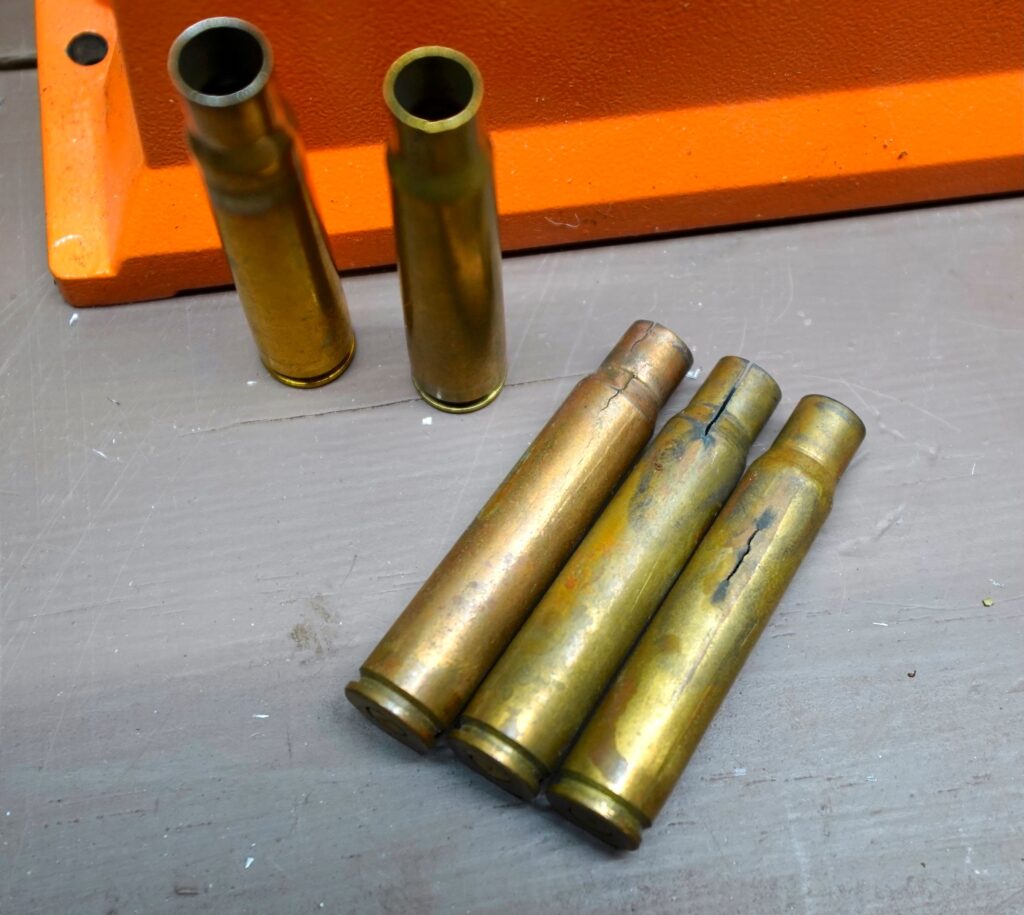
Old brass is extremely vulnerable. When hardened and fired, the neck has the potential of cracking causing a dangerous situation and potential injury.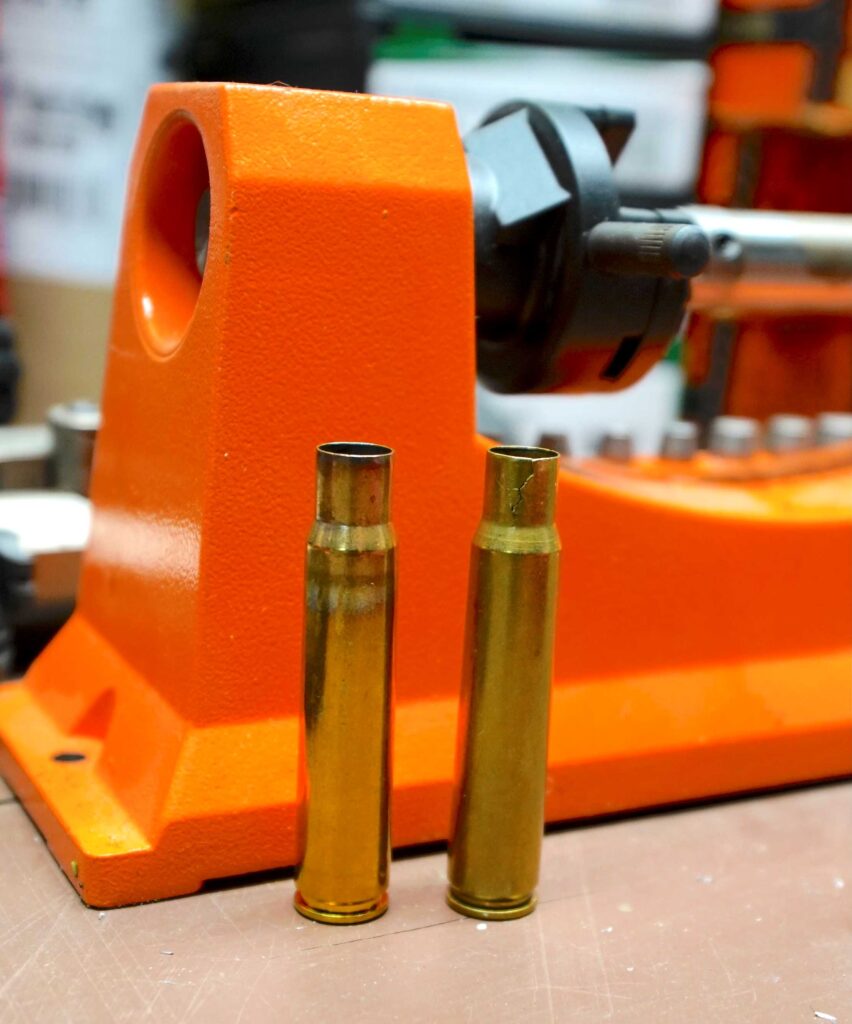
The most common problem with aged and hardened brass used for reloading is the case neck that has split, making it useless.
With so many older and obsolete cartridges, finding reloadable brass can be problematic and regulated only to surplus ammunition currently available. Pulling and annealing naturally hardened cases, or even firing and subsequently annealing cases, can allow users to return to an obsolete and rare cartridge. This can be especially helpful when you need to make your cases for specific calibers, like 7.62×45. All-in-all, annealing is a must-know skill.








